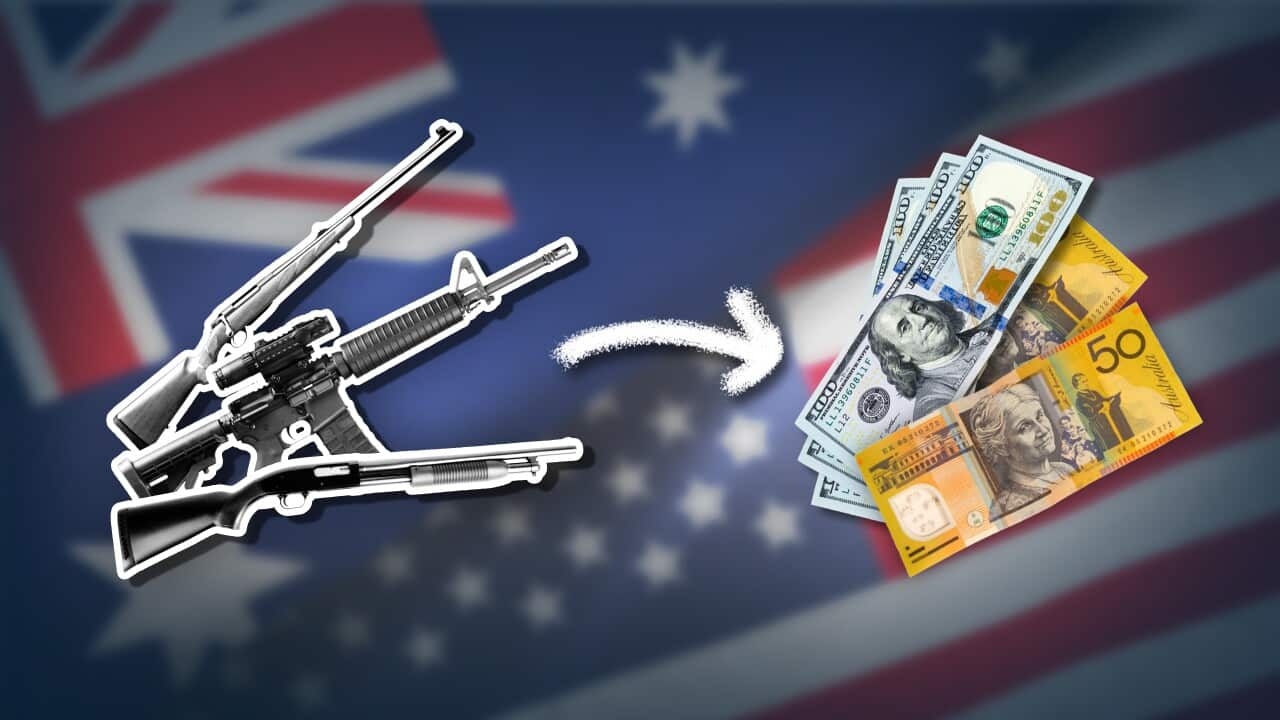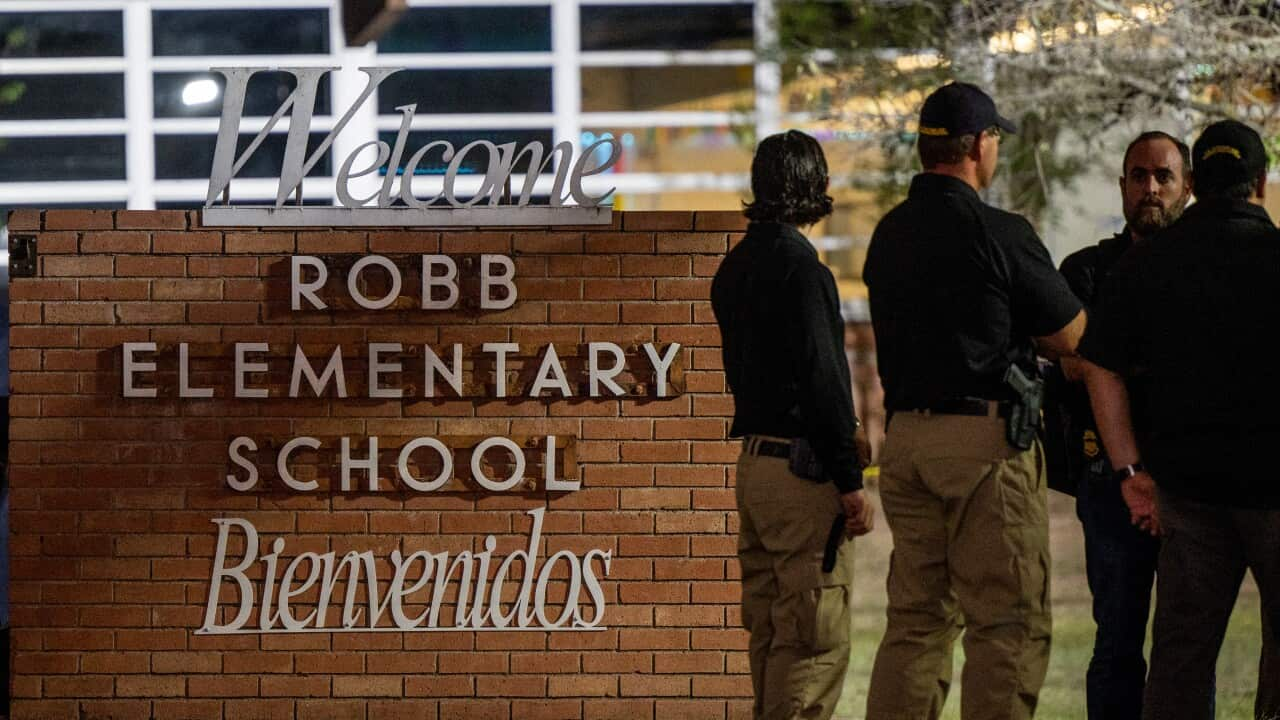Key Points
- Gun buyback schemes aim to change the "type of arsenal in the hands of the community"
- Location points are established where firearm owners can hand in their weapons, usually to the police force
This article contains references to suicide.
There are renewed calls for tougher gun laws in the United States, following the recent mass shooting at Robb Elementary School in Texas.
An 18-year-old shooter opened fire at the Ulvade elementary school in late May, killing 18 young children and three adults.
This school shooting is the latest in a long line of deadly mass shootings in the United States, and has renewed focus on Australia's gun buyback scheme.
What is a 'gun buyback' scheme?
A gun buyback scheme involves a government or private group calling upon owners of recently prohibited firearms to surrender their weapons and receive compensation, usually within a set time frame.
Location points are established where firearm owners can hand in their weapons, usually to the police force. The firearm is then destroyed either in front of the owner or ideally within a short time period following the handover.
Australia implemented a gun buyback scheme in 1996 and 1997, following the Port Arthur massacre, where 35 people were shot dead in Tasmania. The National Firearms Act involved each of the states and territories passing their own legislation prohibiting certain semi-automatic rifles and other firearms typically used in mass shootings.
What are the key aims behind a gun buyback scheme?
Gun buyback schemes aim to change the "type of arsenal in the hands of the community", according to Gun Control Australia Vice President Roland Browne. Former prime minister John Howard prohibited semi-automatic rifles and shotguns following Port Arthur, because they were the type of weapons used most commonly in mass shootings, according to Mr Browne.
"The idea is to eliminate those rapid-fire weapons which pose the most significant risk to the community," he said.
In Australia, the purpose of the buyback scheme was not to reduce crime but to "reduce the frequency of mass shootings in the future", according to Associate Professor Philip Alpers from Sydney University's School of Public Health.
Where have they been used before?
Canada introduced new gun law legislation on Monday, which put a freeze on buying, importing and selling handguns. Previously, Canada's gun buyback scheme was voluntary, but now Prime Minister Justin Trudeau said he wants to impose a mandatory buyback scheme for prohibited firearms.
The United Kingdom initiated a huge nationwide gun buyback scheme in 1996. It was in response to the Dunblane Primary school massacre in Scotland that same year, where a 43-year-old man shot dead 16 students and a teacher.
Professor Alpers said the UK has maintained "a very low rate of gun deaths" as a result of its strict gun laws and buyback scheme.
How effective was Australia's gun buyback scheme following Port Arthur?
Australia's gun buyback scheme has been very successful in terms of preventing mass shootings and gun deaths. Since the 1997 buyback scheme there has been one mass shooting, when a man in Western Australia killed six family members and himself in 2018.
The buyback and accompanying National Firearms Act "reduced the risk of an Australian dying by gunshot by more than 50 per cent", according to Professor Alpers. Australia has one of the lowest rates of gun deaths in the world as a result of the reforms with 0.9 per 100,000 people in 2019 according to Australian Bureau of Statistics data..
However, the risk of firearm-related suicide remains, as the buyback scheme focused on the retrieval of guns used in mass shootings and homicides. Around 70 or 80 per cent of gun deaths in Australia are suicides, according to Professor Alpers.
Is gun buyback a long-term solution for gun control?
Gun buyback schemes are only successful if they're nationally enforced by a federal government, according to Professor Alpers.
"If you target the highest risk weapons, and you make it national, enforce it, and you offer good compensation, then the evidence is that those buybacks reduce the risk of anybody being shot in the country for any reason," Professor Alpers said.
Voluntary, small-scale buy-backs, which have occurred in the US, haven't proven to be as successful. High-quality mass shooting machine guns aren't surrendered in American buybacks as they are in Australia and the UK, according to Professor Alpers.
"Most gun buybacks and gun amnesties are failures because they're very small," he said, "Because [the US] is such a gun-saturated country, the guns that are surrendered are usually the guns that nobody wants."
Could a gun buyback scheme work in the US?
The United States' second amendment protects the right to keep and bear arms, making it "impossible to impose a complete ban on firearm possession", according to UNSW Law Professor Rosalind Dixon. The link between guns and cultural identity in America presents another issue, she said.
"There's also a cultural overlay in parts of the United States where gun use has an identitarian dimension," Professor Dixon said, "where people feel that guns are very much a part of their identity".
However, there are reasonable restrictions and buybacks that could be imposed in line with the second amendment, according to Professor Dixon. She said it would be constitutionally possible to impose red flag laws, which enable police or family members to petition for a firearm to be removed from a person who may present a danger to themselves or others, as well as universal background checks and assault weapon bans.
Readers seeking crisis support can contact Lifeline on 13 11 14, the Suicide Call Back Service on 1300 659 467 and Kids Helpline on 1800 55 1800 (for young people aged up to 25). More information and support with mental health is available at and on 1300 22 4636.











